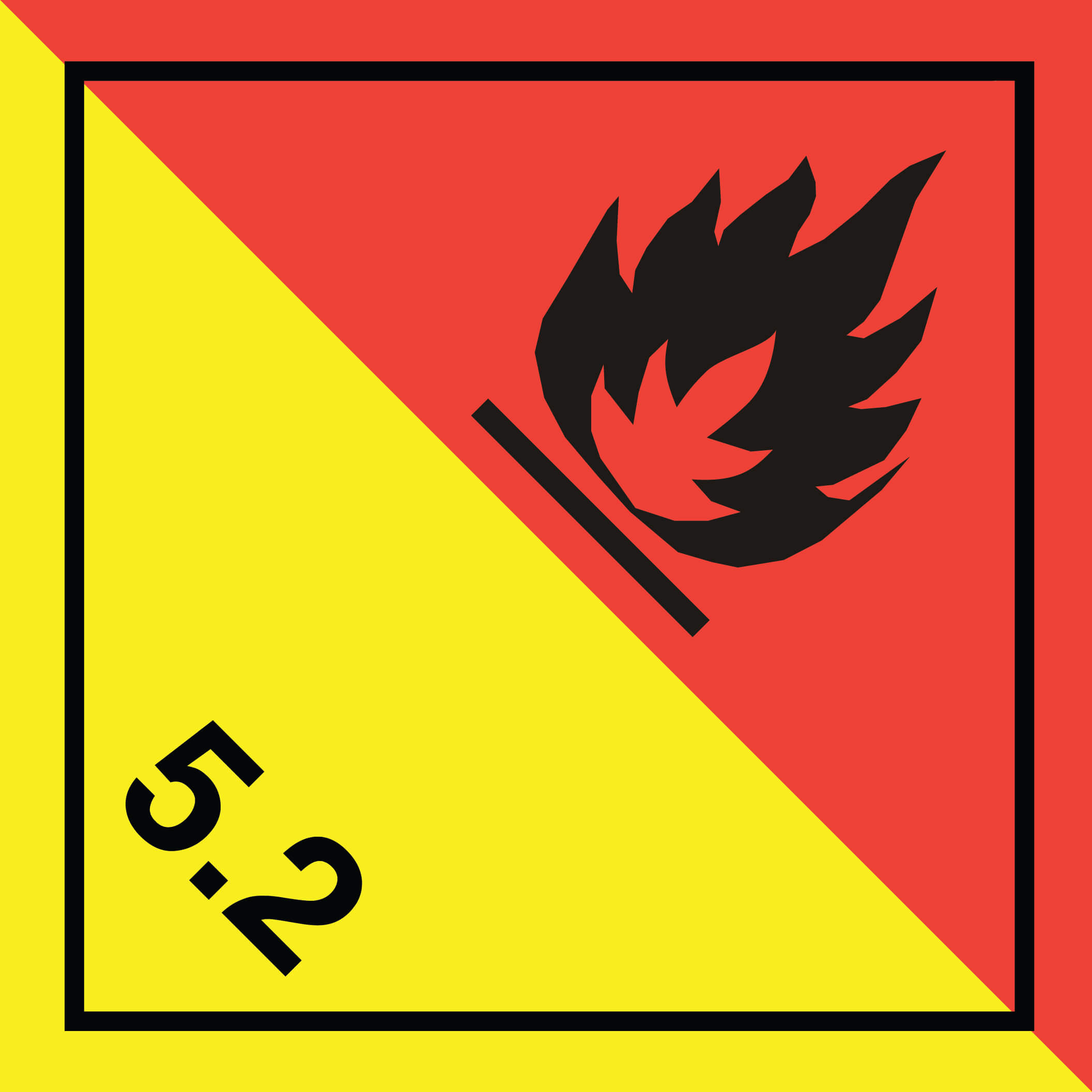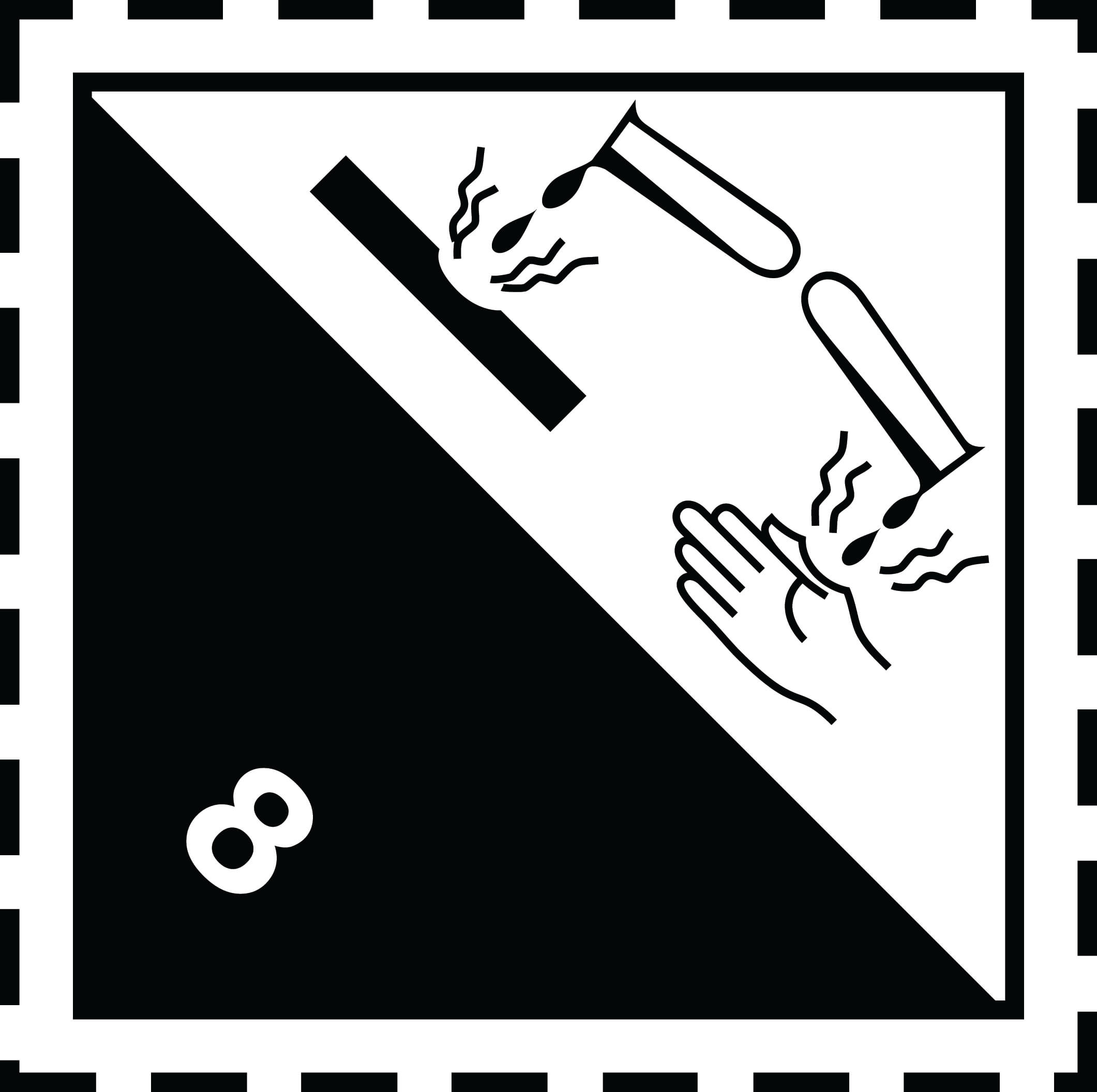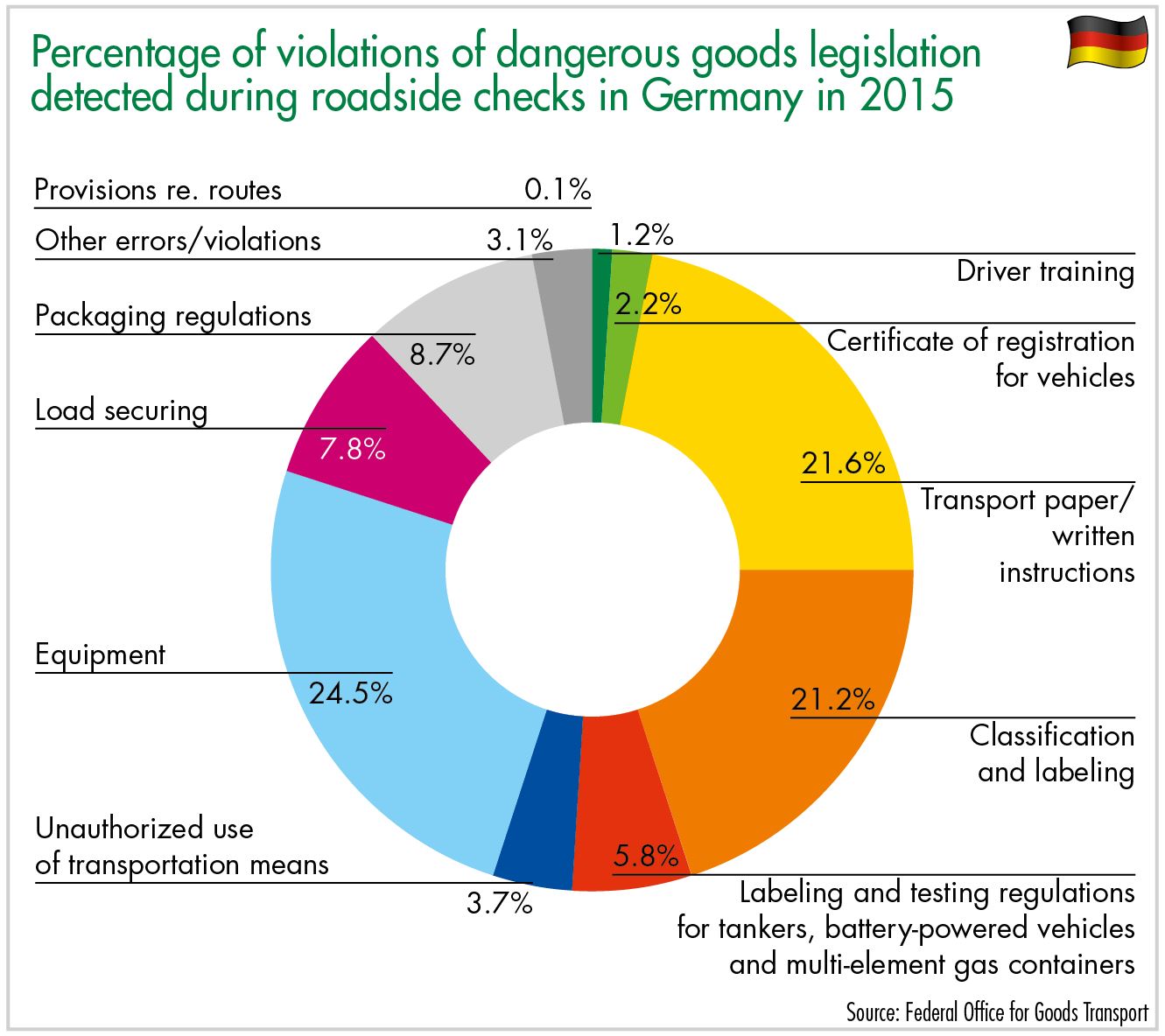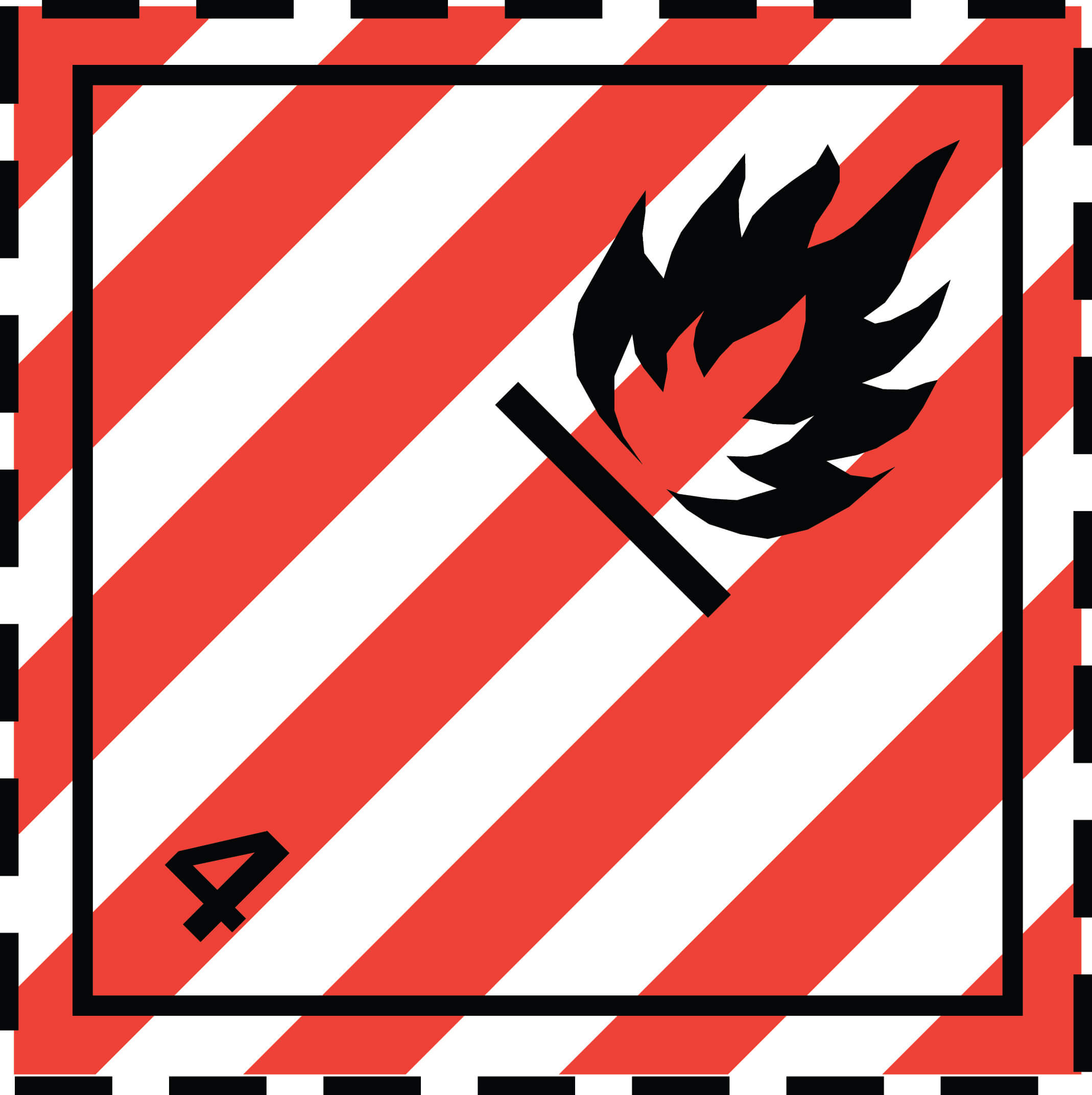Transporting dangerous goods
Truck drivers also regularly transport goods with hazardous properties in their vehicles. These include flammable, poisonous or explosive goods – also known as “dangerous goods.” According to the German Carriage of Hazardous Goods Act, “dangerous goods” are substances and objects that due to their nature, properties or state when being transported can pose risks to public safety or order – particularly the general public, important public domains, human life and health as well as animals and property.
Since hazardous goods are frequently transported across national borders, legislation relating to dangerous goods is part of the fields of law that have for many years taken into account the importance of international cooperation. The source of national and international regulations are the Model Regulations on the Transport of Dangerous Goods, which were introduced by the UNECE in 1956 and have since been updated regularly. Serious accidents have also led to these regulations being amended. For example, an accident in the Tauern tunnel in 1999, where a truck loaded with 24,000 highly explosive cans of spray paint caused a catastrophic fire resulting in 12 people dead and 42 injured, led to the introduction of restrictions regarding the transport of dangerous goods through road tunnels.
To deal with the specifics of the respective modes of transport, the following transport- mode-specific regulations are based on the Model Regulations:
ADR: European Agreement concerning the International Carriage of Dangerous Goods by Road (Accord européen relatif au transport international des marchandises Dangereuses par Route).
RID: Regulations concerning the International Transport of Dangerous Goods by Rail (Règlement concernant le transport international ferroviaire de marchandises dangereuses).
IMDG code: International Maritime Dangerous Goods Code.
ADN: European Agreement concerning the International Carriage of Dangerous Goods by Inland Waterways (Accord européen relatif au transport international des marchandises dangereuses par voie de navigation intérieure).
IATA-DGR: Regulations concerning the transport of dangerous goods in the air (International Air Transport Association – Dangerous Goods Regulations).
Compulsory training for drivers of road vehicles transporting dangerous goods
When it comes to safety in transporting dangerous goods, the driver once again plays a key role. Regulations relating to the transport of dangerous goods by road (ADR) therefore stipulate that drivers of transport units subject to labeling must undergo training. In Germany, acquiring an ADR driver training certificate is organized by the Chambers of Industry and Commerce. The training system entails initial and refresher training courses. The basic course serves as a basis. Drivers are then permitted to transport general cargo. Advanced training courses must be completed so that drivers can transport explosive substances (advance training class 1), radioactive substances (advanced training class 7) and dangerous goods in tankers or vehicles adapted for bulk goods (advanced training for tankers). Drivers must pass a refresher course – including a test – every five years. If a driver wants to possess all of the necessary qualifications, they need to take part in 48 lessons and complete four tests. A failure rate of around 20 percent for the basic course in 2016 shows just how challenging the test is. It should be noted that the number of people taking the test as part of the initial training course has been in decline for a number of years now despite increasing goods transportation.
European regulations also stipulate the role of a dangerous goods safety advisor. The safety advisor offers advice for companies and takes preemptive measures to ensure that goods are transported safely by, for example, monitoring the packing procedure or ensuring that suitable vehicles are used. The advisor thereby ensures the safety of transports from a central location. As is the case with drivers who transport dangerous goods, training in Germany is managed by the Chambers of Industry and Commerce. The training itself is conducted by companies recognized by the Chambers of Industry and Commerce and is divided into modes of transport (road, sea, inland vessels and rail). If a dangerous goods safety advisor wants to obtain a qualification for all modes of transport, they need to take 60 lessons. Before the advisor can start work, they also need to take an exam. A failure rate of no less than eleven percent shows that thorough preparation is required for this test.
Dangerous goods accidents and controls
As is the case with other specialist officers, the dangerous goods safety advisor can also be appointed externally, which gives many companies the opportunity to work with experienced specialists. With a nationwide network of 120 dangerous goods safety advisors, DEKRA ensures that goods are transported safely. Dangerous goods regulations require all persons involved with the transport of dangerous goods to undergo training. This encompasses a range of persons, including those who pack dangerous goods or load them onto trucks. Special approval is not required to undertake the training, and the qualification of those offering the training is not regulated. However, the only relevant qualification is a training course to become a dangerous goods safety officer.
In Germany, dangerous goods regulations are monitored by the responsible state authorities, the police and the Federal Office for Goods Transport (BAG). BAG publishes a special report once a year. According to this report, 20,171 vehicles were inspected in 2015. Among these, fault was found with 2968 vehicles (Figure 29). Highly skilled, well-trained employees and support from an experienced dangerous goods safety officer help to prevent these faults. In addition to the risk of accidents, the risk of fines and delays in transport operations can also be minimized in this way.
In 2015, the Federal Highway Research Institute recorded 156 accidents involving dangerous goods on German roads. 118 of these accidents resulted in personal injury, with four people killed and 169 injured. These statistics do not state whether there was any leakage of hazardous substances. However, accident figures are falling overall. In 2014, 163 accidents were recorded compared with 206 in 2013. Fortunately, road accidents involving dangerous goods are relatively rare. That said, incidents such as the one that occurred December 19, 2014, when a truck loaded with aluminum phosphide caught fire on German highway A 7 near the city of Göttingen, highlight the dangers inherent in such operations. One person was killed in the accident, and the highway and nearby railtracks had to be closed for several hours.






